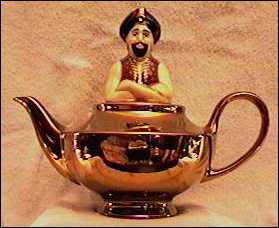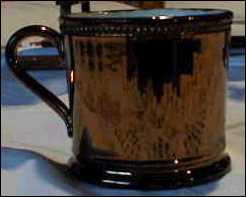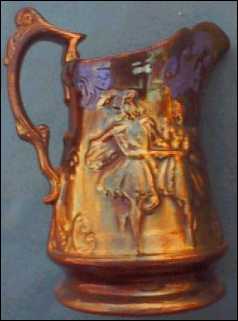![]()
Lustre
|
Lustre |
![]()
![]() When potters migrated
from Iraq to the western Muslim world in the 10th century, the lustre technique
moved with them. As with tin glazes, lustreware ultimately influenced Europe by
way of Moorish Spain.
When potters migrated
from Iraq to the western Muslim world in the 10th century, the lustre technique
moved with them. As with tin glazes, lustreware ultimately influenced Europe by
way of Moorish Spain.
![]() Lustre decorated earthenwares and porcelains come in many forms, the most
common being the 'copper lustre' (produced from gold); this often completely
covers the item. Silver lustre was also used in the same manner.
Lustre decorated earthenwares and porcelains come in many forms, the most
common being the 'copper lustre' (produced from gold); this often completely
covers the item. Silver lustre was also used in the same manner.
![]() Other lustre effects were also used, one type being built up by one or two washes
of lustre forming the scenic or other motif.
Other lustre effects were also used, one type being built up by one or two washes
of lustre forming the scenic or other motif.

"Copper Lustre Teapot"
The colour is a copper lustre; cream genie with green turban;
has a black beard; and a dark red waist coat.
The backstamp on the bottom says
"The Genie Teapot Made by Wade England".

Small lustre cup. Cream
inside.
No decoration. Possibly a child's cup.
Age: Unknown. Maker: Unknown. Size: 2 1/2"" tall.

COPPER LUSTERWARE PITCHER .
Signed on bottom "ALBERTON LONGTON
ENGLAND"
Measures 7" by 6" wide c1870'S.
![]()
questions / comments? email Steve Birks steveb@netcentral.co.uk